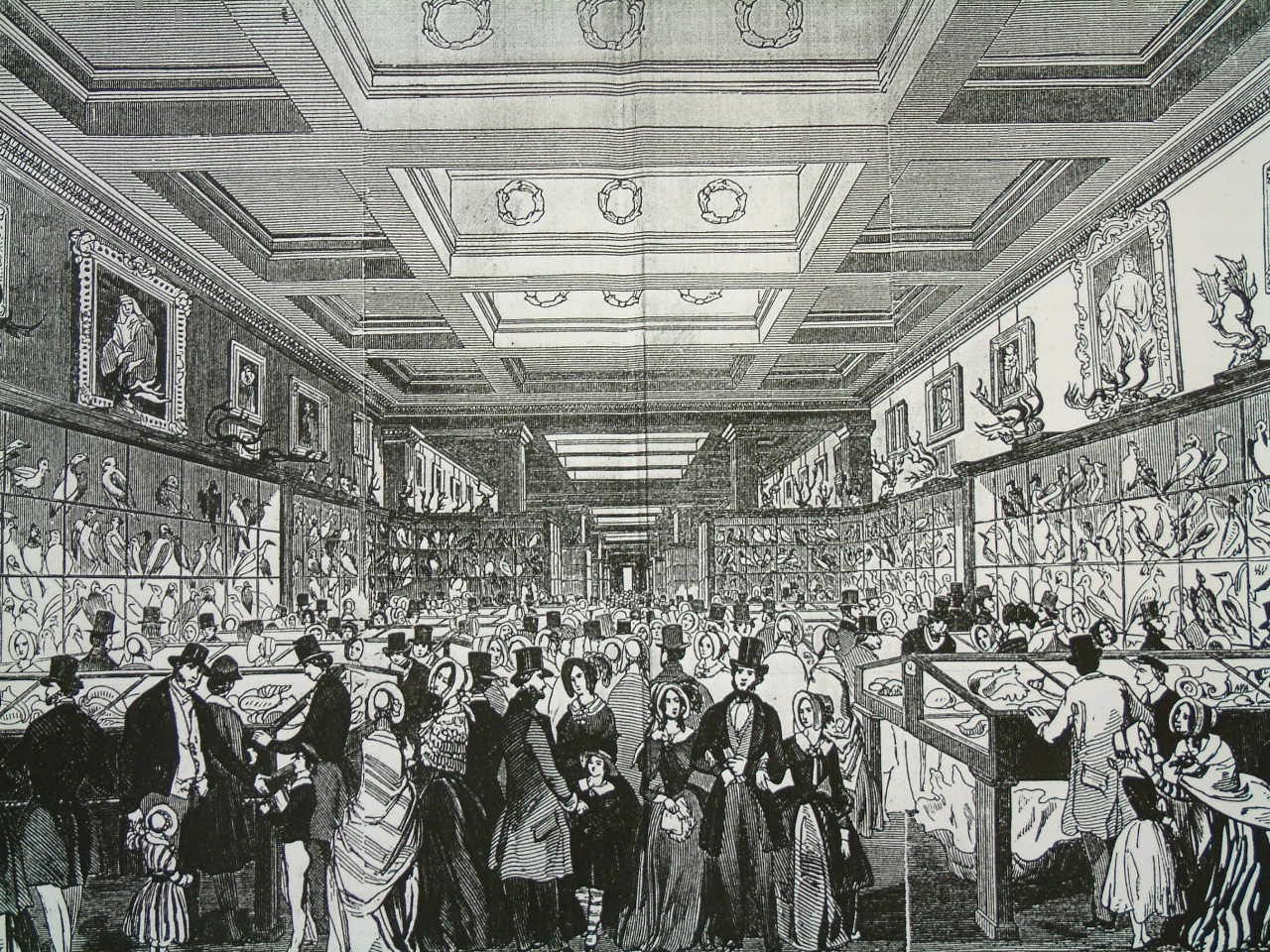John Gould - the age of collecting
The industrial and scientific revolution of the 18th and 19th centuries saw dramatic changes in the way people thought about their world and the control they had over it. The British Empire was expanding and the natural world and its resources were there to be explored and exploited. Knowledge we take for granted today was in its infancy, particularly in medicine, hygiene, power generation, transport, education and basic human rights.

Crowds in Museum Photographer: Australian Museum Photography © Australian Museum Archives
Image: -©
Discoveries about the natural world fuelled widespread fascination with science. Charles Darwin's theory of evolution sparked science-based challenges to religious belief. Public scientific lectures and demonstrations were popular.
This was a time of world exploration and thousands of exotic and unknown animals were arriving in London as those returning from expeditions brought collections home. These specimens, for the most part dead and preserved, though with the occasional live animal thrown in, were bought on arrival by taxidermists, collectors and dealers in skins. They were prepared and then sold on to museums and private collections.
Victorian gentlemen were obsessed with collecting. Many had private collections filled with stuffed animals, natural history paintings and 'curios' from other cultures. There was a craze for natural history and John Gould was in the perfect position to become an important player.
The surge of interest in natural history in the 19th century came at a time when book production exploded as a result of the harnessing of steam power to drive the printing presses. This spectacular combination of industrial and technological progress sparked a light in John Gould's entrepreneurial eye.
Timeline of scientific discoveries during John Gould's lifetime
- 1804 John Gould is born. Overland travel is almost entirely by walking or horse-drawn carriage.
- 1807 The first successful steamboat which would replace sailing by wind-power is invented.
- 1807 The percussion gun using a detonating powder is invented (when the gun was fired, the shooter was enveloped in a cloud of smoke).
- 1820 William Swainson employs lithography for the first time in England in natural history illustration.
- 1826 The Zoological Society of London is formed.
- 1830 The first commercial railway line starts operating.
- 1830 Arsenic soap becomes the standard preservative for taxidermists.
- 1831 Charles Darwin's Voyage on HMS Beagle commences.
- 1831 Michael Faraday discovers the electro-magnetic current, making generators and electric engines possible.
- 1839 The daguerreotype is invented, heralding the birth of photography.
- 1841 William Whewell coins the term 'scientist' to replace 'natural philosopher'.
- 1844 The Factory Act reduces children's work hours to seven per day.
- 1844 Samuel Morse's telegraph expands into commercial use.
- 1851 The Great Exhibition is held in London.
- 1854 Modern prism binoculars are invented.
- 1859 Charles Darwin's The Origin of Species is published.
- 1859 The first successful gasoline engine is demonstrated.
- 1860 London University offers science degrees for the first time.
- 1876 Alexander Graham Bell invents the telephone.
- 1879 Edison invents the incandescent lamp.
- 1881 John Gould dies. Overland transport by electric rail is now common; the first commercially successful electric tram is built outside of Berlin.


